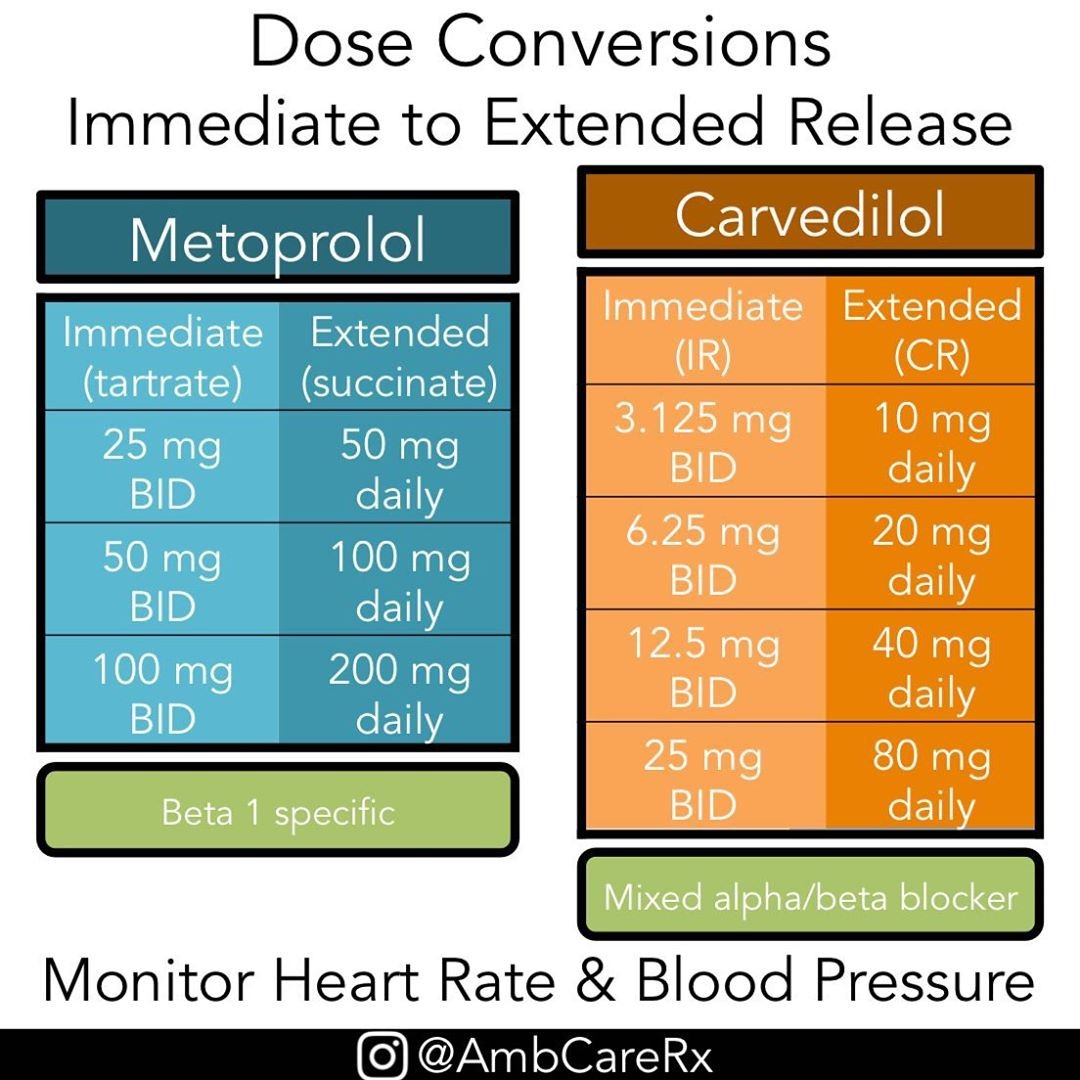
Contents
- 1 Coreg vs. Metoprolol Tartrate
Coreg vs. Metoprolol Tartrate
Carvedilol treats high blood pressure and congestive heart failure. It’s related to labetalol (Normodyne, Trandate) and blocks adrenergic receptors to reduce the heart’s rate and force of contraction, thereby lowering the work of the heart. Carvedilol also relaxes arteries and lowers blood pressure.
Metoprolol, a beta-blocker, treats high blood pressure, heart pain, abnormal heart rhythms, and certain neurologic conditions. Other beta-adrenergic blockers include propanolol (Inderal, Inderal LA, Innopran XL), atenolol (Tenormin), and timolol (Blocadren). Metoprolol also treats congestive heart failure, angina pectoris related to coronary artery disease, migraine prevention, hyperthyroidism, and certain types of tremors.
What are the side effects of Coreg and metoprolol tartrate?
Coreg
The most common side effects of carvedilol are:
- dizziness,
- edema (fluid accumulation),
- decreased heart rate,
- diarrhea, and
- postural hypotension (a rapid decrease in blood pressure when changing positions).
Taking carvedilol with food reduces the risk of postural hypotension.
Other side effects of carvedilol include irregular heart rhythm and vision abnormalities.
Carvedilol should be used cautiously in patients who use diuretics or who are elderly or have cirrhosis, asthma, peripheral vascular disease, hyperthyroidism, Prinzmetal’s variant angina, or kidney disease.
Metoprolol Tartrate
Metoprolol is generally well tolerated. Side effects include:
- abdominal cramps,
- diarrhea,
- constipation,
- fatigue,
- insomnia,
- nausea,
- depression,
- dreaming,
- memory loss,
- fever,
- impotence,
- lightheadedness,
- low blood pressure,
- cold extremities,
- sore throat, and
- shortness of breath or wheezing.
Possible serious adverse effects include:
- slow heart rate,
- Raynaud’s phenomenon,
- hepatitis, and
- increased insulin resistance.
Metoprolol can exacerbate breathing difficulties in patients with asthma, chronic bronchitis, or emphysema.
WARNING
- In patients with existing slow heart rates (bradycardias) and heart blocks, metoprolol can cause dangerously slow heart rates and shock. Metoprolol reduces heart muscle contraction force and can worsen heart failure symptoms. In patients with coronary artery disease, abruptly stopping metoprolol can worsen angina and occasionally cause heart attacks. If discontinuing metoprolol is necessary, it should be done gradually over several weeks.
- Initiating high-dose extended release metoprolol in non-cardiac surgery patients is associated with bradycardia, hypotension, stroke, and death. However, long-term therapy with metoprolol should not be routinely withdrawn prior to major surgery. Impaired heart response to reflex adrenergic stimuli may increase general anesthesia and surgery risks.
What is the dosage of Coreg vs. metoprolol tartrate?
Coreg
- Carvedilol tablets are usually taken twice daily. For high blood pressure, the dose is 6.25 mg twice daily, maxing out at 25 mg twice daily.
- For congestive heart failure, the dose is 3.25 mg twice daily, maxing out at 25 mg twice daily. People weighing over 85 kg (187 pounds) may take a maximum dose of 50 mg twice daily.
- Carvedilol should be taken with food to slow absorption and reduce the occurrence of low blood pressure when rising from a seated or sleeping position. Changes in carvedilol doses should be done under a physician’s direction to avoid serious cardiac complications.
- Extended-release capsules are used to treat heart failure or high blood pressure and range in dose from 10 to 80 mg once daily.
Metoprolol
- Metoprolol should be taken before meals or at bedtime.
- The dose for treating hypertension ranges from 100-450 mg daily, taken in single or divided doses.
- Angina is treated with 100-400 mg daily in two divided doses.
- Heart attack is treated with a 5 mg injection given three times, spaced 2 minutes apart, followed by 50 mg oral metoprolol every 6 hours for 48 hours. After 48 hours, patients should take 100 mg orally twice daily for at least 3 months.
- For congestive heart failure, the initial dose is 25 mg daily. The dose is increased every 2 weeks to reach a target dose of 200 mg daily orally.
- Hyperthyroidism is treated with 25 to 30 mg orally every 6 hours.
QUESTION
What drugs interact with Coreg and metoprolol tartrate?
Coreg
- Carvedilol can mask early warning symptoms of low blood sugar, such as tremors and increased heart rate, and is not recommended for diabetes patients taking blood sugar-lowering medications like insulin or oral anti-diabetic drugs. These patients may need to monitor their blood sugar more frequently.
- Taking carvedilol with calcium channel blockers like diltiazem (Cardizem) or verapamil (Calan) may cause irregular heart rhythm or increased blood pressure.
- Reserpine, monoamine oxidase inhibitors (phenelzine or isocarboxazid), and clonidine (Catapres) have similar mechanisms of action as carvedilol and can greatly accentuate its effects, causing a steep decline in blood pressure and/or heart rate. Blood pressure and heart rate should be closely monitored.
- Carvedilol may increase digoxin (Lanoxin) blood levels, so the digoxin level should be monitored if carvedilol is started, adjusted, or discontinued.
- Rifampin (Rifadin) can significantly decrease carvedilol blood levels, possibly requiring an increased dose of carvedilol. The elimination of carvedilol, along with other drugs like quinidine (Quinaglute), fluoxetine (Prozac), paroxetine (Paxil), or propafenone (Rythmol), is blocked by these drugs.
- These drugs may potentially increase carvedilol blood levels (along with the risk of side effects) if taken together.
- Carvedilol may increase cyclosporin (Sandimmune, Neoral) blood levels, necessitating cyclosporin dose adjustments when used together.
- Amiodarone (Cordarone) may increase carvedilol blood levels, increasing its effects and potential toxicity.
Metoprolol Tartrate
- Administering metoprolol with calcium channel blockers and digoxin (Lanoxin) can dangerously lower blood pressure and heart rate.
- Metoprolol can mask early warning symptoms of low blood sugar and should be used cautiously in diabetes patients.
- Fluoxetine (Prozac) can increase metoprolol blood levels by reducing its breakdown, potentially enhancing side effects.
Are Coreg and metoprolol tartrate safe to take while pregnant or breastfeeding?
Coreg
The safe use of carvedilol during pregnancy has not been established.
No studies with carvedilol are available in nursing mothers, so its use is not recommended due to the risk of a slow heart rate in infants.
Metoprolol tartrate
The safe use of metoprolol during pregnancy has not been established.
Small quantities of metoprolol are excreted in breast milk and may potentially harm infants.
Summary
Carvedilol (Coreg) and metoprolol tartrate (Lopressor, Toprol XL) are beta-blockers used to treat high blood pressure and congestive heart failure. Side effects include diarrhea, decreased heart rate, and lightheadedness.


